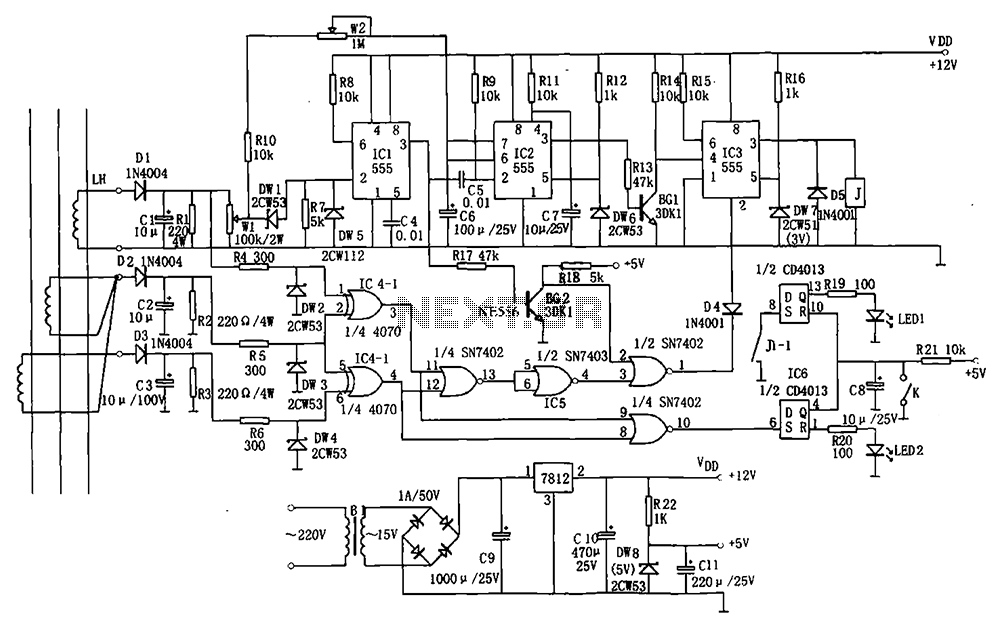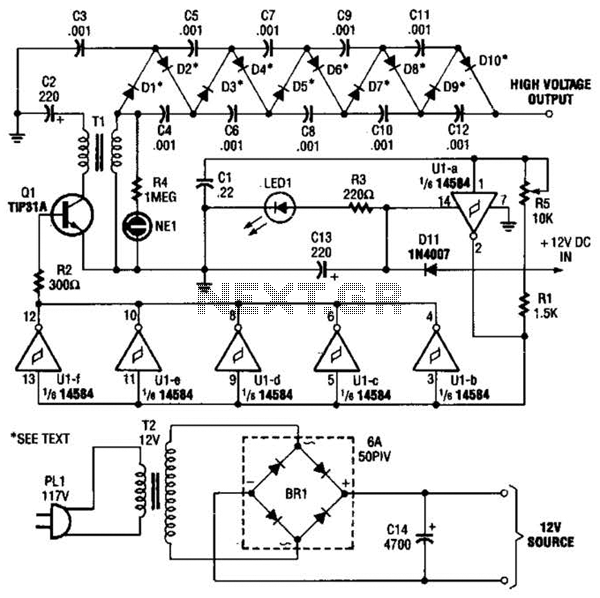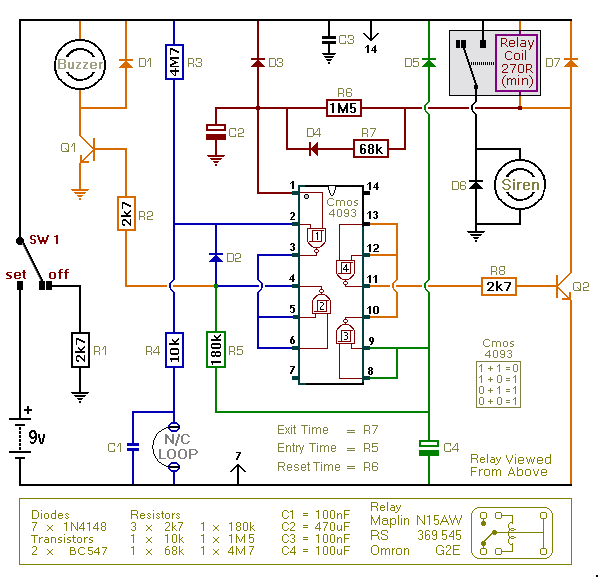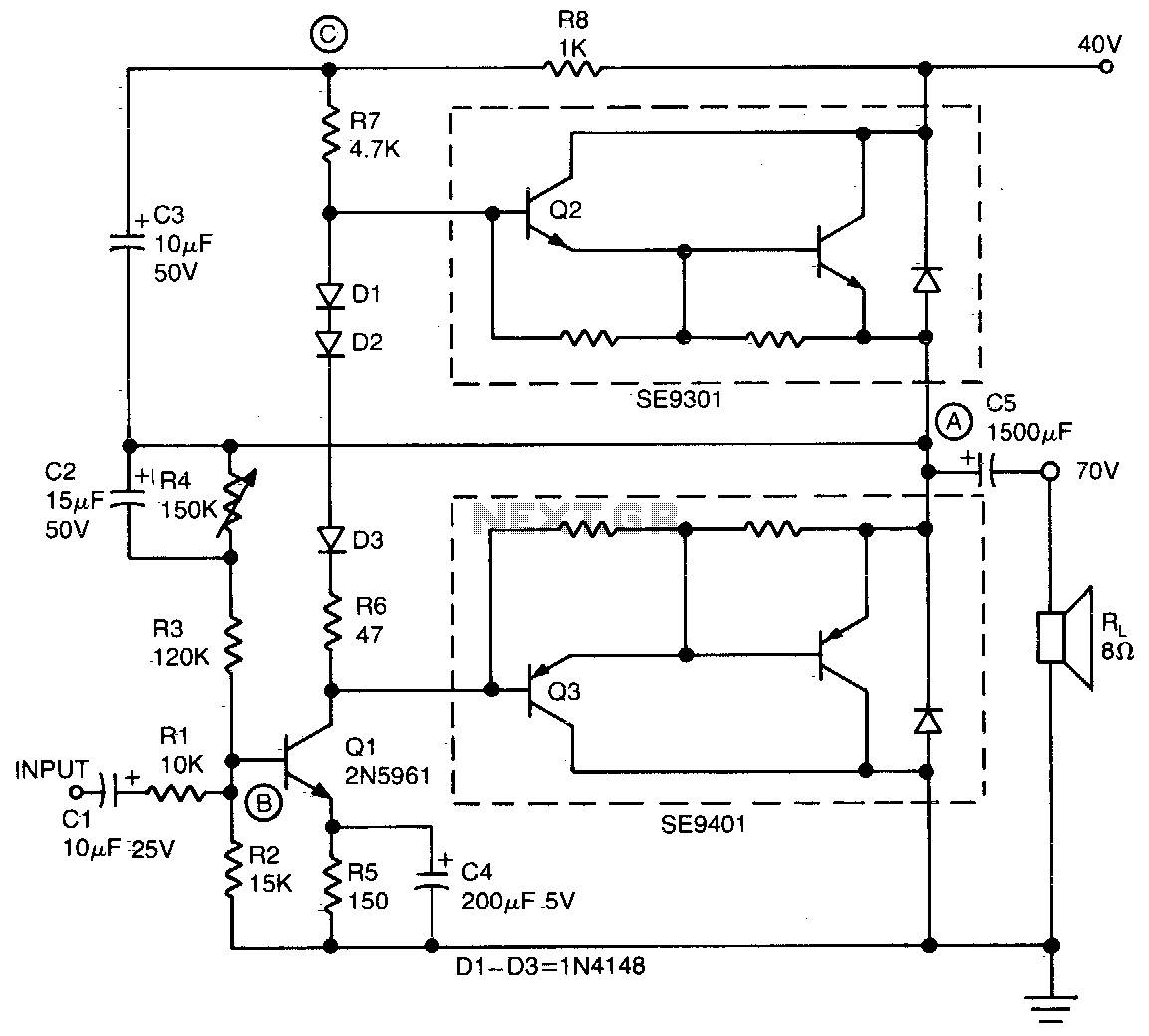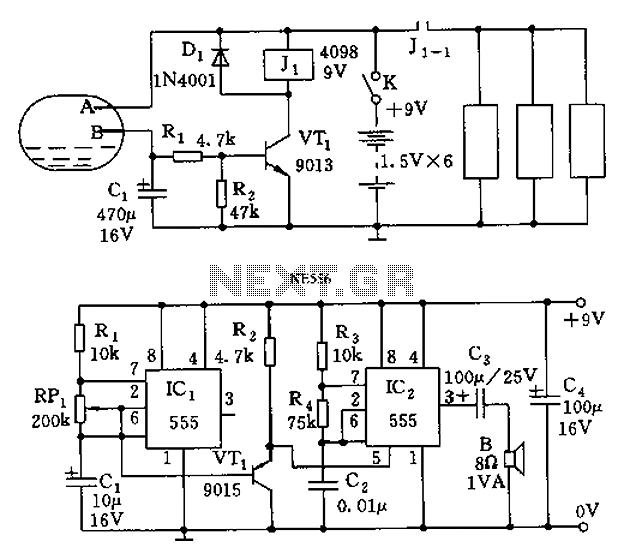
Delay electronic doorbell circuit - touch doorbell amplifier circuit

Delay electronic doorbell circuit - touch doorbell amplifier circuit
The delay electronic doorbell circuit is designed to provide a user-friendly interface for doorbell activation, utilizing a touch-sensitive amplifier circuit. This circuit typically incorporates a touch sensor that detects user interaction, triggering the doorbell chime after a predetermined delay. The delay feature allows the user to ensure that the circuit does not activate immediately upon touch, providing a buffer period that can help prevent accidental triggering.
The circuit generally consists of several key components: a touch sensor, a microcontroller or timer IC to manage the delay, a power supply, and an output driver connected to the doorbell chime. The touch sensor can be a capacitive or resistive type, which detects changes in capacitance or resistance when a user touches the designated area. The microcontroller or timer IC is programmed to initiate a delay sequence upon receiving a signal from the touch sensor.
Upon activation, the microcontroller starts a timer that counts down the specified delay time. Once the delay period elapses, the microcontroller sends a signal to the output driver, which energizes the doorbell chime. The output driver may consist of a relay or a transistor, depending on the power requirements of the chime. The power supply must provide adequate voltage and current for all components, ensuring reliable operation.
In summary, the delay electronic doorbell circuit with a touch doorbell amplifier enhances user experience by integrating touch sensitivity and delay functionality, making it a practical solution for modern doorbell applications.Delay electronic doorbell circuit - touch doorbell amplifier circuit
The delay electronic doorbell circuit is designed to provide a user-friendly interface for doorbell activation, utilizing a touch-sensitive amplifier circuit. This circuit typically incorporates a touch sensor that detects user interaction, triggering the doorbell chime after a predetermined delay. The delay feature allows the user to ensure that the circuit does not activate immediately upon touch, providing a buffer period that can help prevent accidental triggering.
The circuit generally consists of several key components: a touch sensor, a microcontroller or timer IC to manage the delay, a power supply, and an output driver connected to the doorbell chime. The touch sensor can be a capacitive or resistive type, which detects changes in capacitance or resistance when a user touches the designated area. The microcontroller or timer IC is programmed to initiate a delay sequence upon receiving a signal from the touch sensor.
Upon activation, the microcontroller starts a timer that counts down the specified delay time. Once the delay period elapses, the microcontroller sends a signal to the output driver, which energizes the doorbell chime. The output driver may consist of a relay or a transistor, depending on the power requirements of the chime. The power supply must provide adequate voltage and current for all components, ensuring reliable operation.
In summary, the delay electronic doorbell circuit with a touch doorbell amplifier enhances user experience by integrating touch sensitivity and delay functionality, making it a practical solution for modern doorbell applications.Delay electronic doorbell circuit - touch doorbell amplifier circuit
